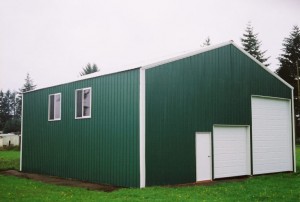There is a strong case to be made that wood is the greenest building material. But for it to really earn that title, we have to rethink how we build with it.
In North America, wood construction has dominated single-family and low-rise housing; steel and concrete have dominated commercial and mid-rise residential construction. This usage made some sense; the building codes favored noncombustible materials, and the low-rise residential market was big enough to suck up all the wood we could cut. The steel and concrete industries were, frankly, more innovative, and their products were considered more durable.
But this was before we worried about climate change, before fossil fuel prices started going through the roof, and before globalism started giving way to localism and the realization when one looks around, there sure is a lot of wood. In fact, right now we have more wood available than we know what to do with. So, why aren’t we using it more of it, and using it better?
With a few notable exceptions, we keep using wood primarily for the one thing we shouldn’t be building: single-family housing. There are 18 million vacant houses in the United States, yet we are cranking out 2x4s for the housing market.
There exists a more practical use for wood in construction. One which minimizes material use, from the ground up –is pole buildings. Wood really is the number one green building material!
The average footings and foundation for a 40’ x 60’ stick framed shop will take 10 to 15 yards of concrete, depending primarily upon frost depth. For a similar sized pole barn, less than two yards of concrete will support the columns.
Concrete, and the cement in it, is blamed for the production of 5 percent of the world’s CO2 production; aggregate extraction and transport is disruptive. But if you look at the concrete industry websites (for example https://www.cement.ca/en/Concrete-and-the-Environment.html), you would see the greenest of products, claiming it is a local resource (convince the neighbors of any gravel pit) and it is recyclable (into roadbeds). And it is heavy. So, when they say it only creates 175 pounds of emissions per ton, they don’t tell you how many tons go into a square foot of building (15 yards of concrete are over 5,000 pounds of emissions)!
When it comes to the structural framework, a post frame building uses only about 50% of the board footage of lumber required for a similarly sized stick frame building. Most pole buildings are steel roofed and steel sided. An average of over 25% or more of steeling roofing is recycled content and once its long useful lifespan is over, it can be recycled 100%!
When you talk about “going green”, go pole building!
To receive more pole building tips and advice subscribe to the pole barn guru blog!











Highly entertaining bless you, I’m sure your visitors might just want far more stories like that maintain the great content.